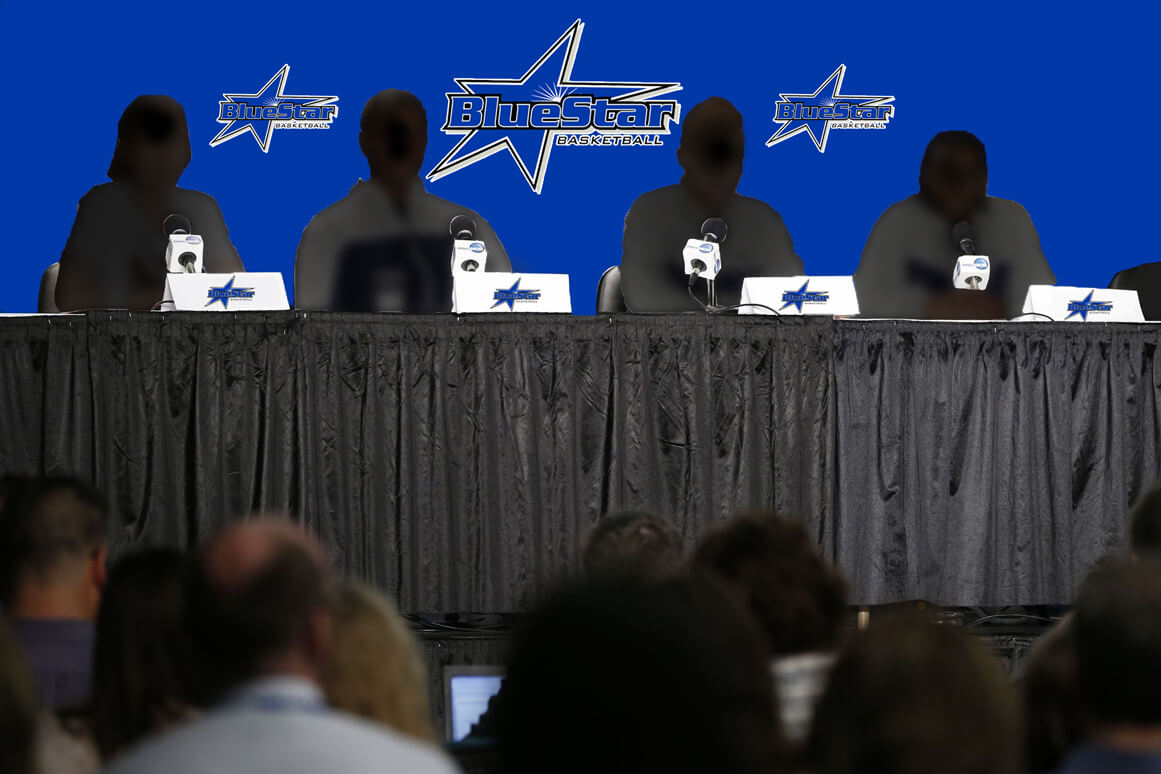While I was watching the Notre Dame-Duke game Monday on ESPN2, I engaged in a bit of Twitter chatter with a couple of high school and youth coaches I’ve gotten to know on that social media channel.
We’ve had a fairly regular conversation during the season, especially on the “Big Monday” showcase games. These involved two Top 10 teams fighting for first place in the ACC, right after No. 5 Maryland held off Michigan State.
As the Fighting Irish began pulling away from Duke, this Tweet, from Trevor Goodson of the Tennessee/Kentucky-based TeamsLink travel organization, popped up in my timeline:
Can’t tell you how many times I’ve mentioned a current WNBA/College basketball player & a Middle/High School player had no clue who it was..
— Trevor Goodson™ (@CousinTrevvv) February 17, 2015
While this shouldn’t have surprised me — I’ve been hearing this for years from those involved in girls grassroots basketball — it did. Here’s more of the same, from California:
@CousinTrevvv @wparker I can tell you my HS team really doesn’t watch college basketball — Derryl Trujillo (@TrujilloDerryl) February 17, 2015
I understand how kids are busy with their own games and practices, homework, family obligations and socializing with their friends. But with dozens of games available on television just about any night of the season, there are ample opportunities for females aspiring for college scholarships to watch those starring at that level:
@TrujilloDerryl still so many games for any young player anyone to watch on the tube. amazed at the abundance compared to even 10 years ago.
— Wendy Parker (@wparker) February 17, 2015
I realize my thoughts here are based on anecdotal exchanges, and I know I may sound a bit naive. I suppose I was flummoxed given the quality of the players on display. If you want to be a great college guard, great examples abounded Monday with Maryland’s Lexie Brown and Jewell Loyd of Notre Dame.
They’re two of the best in the game, and undoubtedly will be playing at the pro level very soon. I suppose I’m just a bit taken back that with all the games that young players could be watching, and learning from, this doesn’t seem to be happening as much as I thought.
When I interviewed Diana Taurasi during her UConn days, she told me she really didn’t watch much women’s basketball when she was growing up. But there wasn’t the television exposure for the sport when she was a kid, compared to now.
To be fair, there are a few young ladies who play at the high school level who I see Tweeting about the college game they’re watching, and a number of them are familiar with the current batch of college and WNBA stars.
And I understand the demographics of ESPN2’s women’s viewing audience. Val Ackerman’s white paper a couple years ago starkly mentioned that the average viewer is a 55-year-old male. Hence, the occasional Viagra ads.
I wonder if there will ever be enough hard-core female students of the game to dramatically raise what seems to be a ceiling of interest. How can you grow the game — and build future audiences for women’s college hoops and the WNBA — if this may be as good as it gets?
There’s been a lot made within youth girls basketball circles about how the sport is losing players to other sports — volleyball, soccer, lacrosse, etc. — and why there are so few females involved at the grassroots level, as coaches, evaluators and organizers.
Mark Lewis wrote on this site in August that women are a vast “silent majority” here, and this is nothing new. While they are not totally absent from the scene, “they’re outnumbered more than fans of the Big Bang theory at a Shakespearean Festival.”
If these now-grown women who aren’t involved in the sport weren’t watching when they were kids, should we be surprised by this?
When we hear the hand-wringing about the decline of women coaches at the top levels of the game — and here it is renewed again, by the usual academic bean-counting suspects — can we point at least a little bit to what I’m trying to argue here?
That is, how many girls really have the game in their blood — not just to play and practice, and try to get a scholarship, but to watch those they emulate, even to know who they may be?
I’m not blaming anyone or anything here. For many youth athletes, male and female, playing sports is just another activity, like music lessons or service organizations and honor societies. Kids try a lot of things to see what their passion may be, and for some, sports will only move the needle so far.
But the rationale that girls need female role models doesn’t hold much weight if they’re not doing everything they can to make themselves the best players they can be, including watching a game that’s all over the airwaves, on their way to becoming coaches, administrators, television announcers and so on. Not just having a career in the sport, but making a life out of it.
Without the guys I mentioned above and others I have gotten to know in this sport, I would hate to think where girls and women’s basketball would be. If those doing the scolding about the lack of female coaches would dig in at the grassroots level, then perhaps there would be a larger pool of women to choose from to start, knowing that those numbers fall off as some choose other professions.
I’ve written this plenty of times before, but the further down you go on the women’s coaching pyramid, the more male it becomes. That’s not where the money, or big-time opportunities, are to be found. As Mark Lewis also wrote, “This isn’t a glass ceiling situation here. It’s a wide open market.” The opportunities to get involved, and work your way up the ranks, are there, but who wants to start at the bottom?
If you read the stories and profiles of the new female coaching stars of this sport — Dawn Staley, Katie Meier, Lindsay Gottlieb, Nikki Caldwell, etc. — you’ll quickly learn they can’t imagine being without basketball.
The coaching life, the basketball life, isn’t for everyone regardless of gender. What I’m wondering about now, 42 years after Title IX and a good 25 years after I started writing about women’s basketball, is whether the sport will ever develop enough young women who can’t not be without the game.
Wendy Parker is a sportswriter and web editor who has covered women's basketball since the early 1990s. She is a correspondent for Basketball Times and formerly covered women's and college sports, soccer and the Olympics at The Atlanta Journal-Constitution. She is the author of "Beyond Title IX: The Cultural Laments of Women's Sports," available on Amazon, and the creator of Sports Biblio, a blog about sports books and history.




